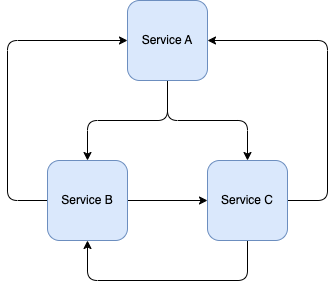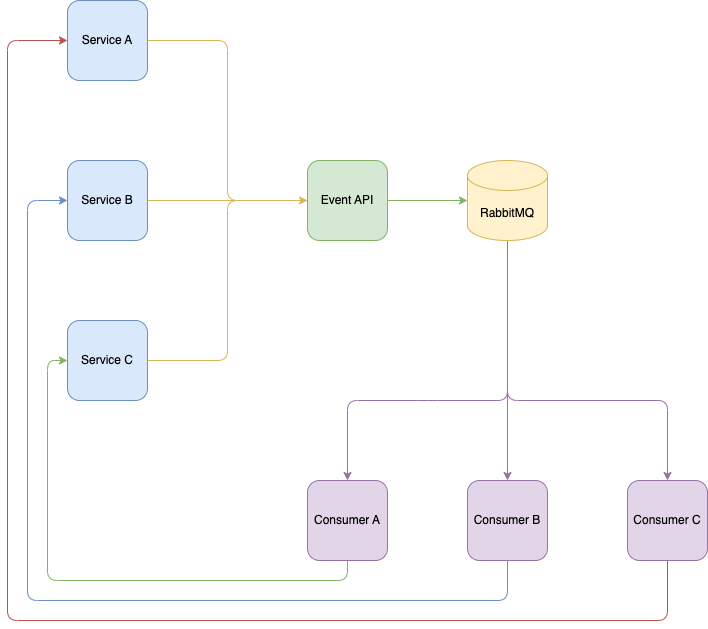Exploring the Power of Event Driven Architecture in Modern Software Development
Unlock Efficiency and Scalability in Software Development with Event-Driven Architecture (EDA). Learn how EDA empowers real-time processing and seamless microservices communication for agile, scalable, and resilient applications.

In software development, building efficient and scalable applications is a challenge that developers constantly face. One approach that has gained popularity for its ability to address this challenge is event driven architecture (EDA). In simple terms, EDA refers to a design paradigm where the flow of the program is determined by events like user actions or messages from other programs.
The Challenge of Microservice-to-Microservice Communication
Microservice architecture has revolutionized the way we design and develop applications, offering flexibility, scalability, and resilience. However, as organizations embrace microservices, they are confronted with the challenge of enabling effective communication between these distributed components.

The issue with microservice-to-microservice communication lies in its potential to create tight coupling between services. This can lead to a domino effect where changes in one service trigger cascading updates across multiple others, making the system more complex and less maintainable.
Additionally, it can hinder scalability as each service needs to be aware of the location and interface of other services it communicates with.
While direct microservice-to-microservice communication may seem convenient in the short term, embracing event-driven architecture is crucial for building scalable and resilient systems that can adapt to changing requirements without causing unnecessary complexity or fragility.
The Essence of Event Driven Architecture
Event driven architecture breaks down large monolithic applications into smaller manageable microservices. Each microservice operates independently but communicates with others through events via queueing systems such as RabbitMQ. When a state change occurs in one service (an 'event'), it produces an event notification which other services can consume and react to accordingly.
This decoupling allows each component to operate and evolve independently without impacting others. As long as they adhere to the agreed-upon contract for communication (the 'events'), they are free to change internally without affecting their interaction with other components.
Better Scalability with Microservices
The use of microservices within an EDA context provides significant benefits when it comes to scalability. Since each service operates independently, you can scale them individually based on demand instead of having to scale your entire application at once. This flexibility makes managing resources much easier and cost-effective especially during peak usage times when certain services might experience higher demand than others.
Benefits of Event Driven Architecture
Having gained a foundational understanding of event driven architecture and its functionality, it's time to explore the advantages it provides.

In this example, each microservice operates independently and exclusively communicates through an Event API. The decision to implement a dedicated Event API was deliberate, as it abstracts the underlying messaging system, such as RabbitMQ. This abstraction enhances future flexibility, making it easier to switch to alternative messaging solutions when necessary.
In this Event-Driven Architecture, Consumers have the capability to horizontally scale with the assistance of autoscaling mechanisms like HPA in Kubernetes (K8s). Additionally, individual microservices can independently scale, enhancing the system's resilience and robustness.
Loose Coupling & High Scalability
The decoupling offered by EDA leads to highly scalable systems. Each microservice can be developed, deployed, and scaled independently without affecting others. This independence reduces complexity in codebase management and allows for faster development cycles as teams can work on different services simultaneously.
Fault Isolation
In an EDA system, if one service fails or encounters an error, the impact is isolated to that particular service while others continue to function normally. This software resilience makes your application more robust and less prone to total system failures.
Real-Time Processing
Event driven architectures are excellent at handling real-time data processing needs. As soon as an event occurs (like a user click or sensor reading), it triggers immediate action within your application enabling you to deliver real-time responses or insights based on these events.
Various software tools and frameworks are available to facilitate the real-time processing. For instance, you can leverage Apache Kafka for high-throughput event streaming, Apache Flink for stream processing, AWS Lambda for serverless event-driven computing, RabbitMQ for message queuing, NSQ for lightweight messaging, or NATS for high-performance messaging. These software solutions empower developers to build robust and responsive systems capable of handling a wide range of real-time scenarios.
Why Embrace Event Driven Architecture?
Having an architectural design like EDA provides agility in development processes along with improved scalability and fault tolerance capabilities which are critical for modern applications. Moreover, its inherent ability for real-time processing opens up new possibilities in creating responsive applications that provide instant feedback based on user actions or other events.
Event driven architecture is not a silver bullet for all types of applications, but when applied correctly in the right scenarios, it can provide substantial benefits that help developers build resilient and scalable software solutions. It’s an exciting time to be part of this shift towards event-driven microservices and explore the numerous possibilities they bring along!
